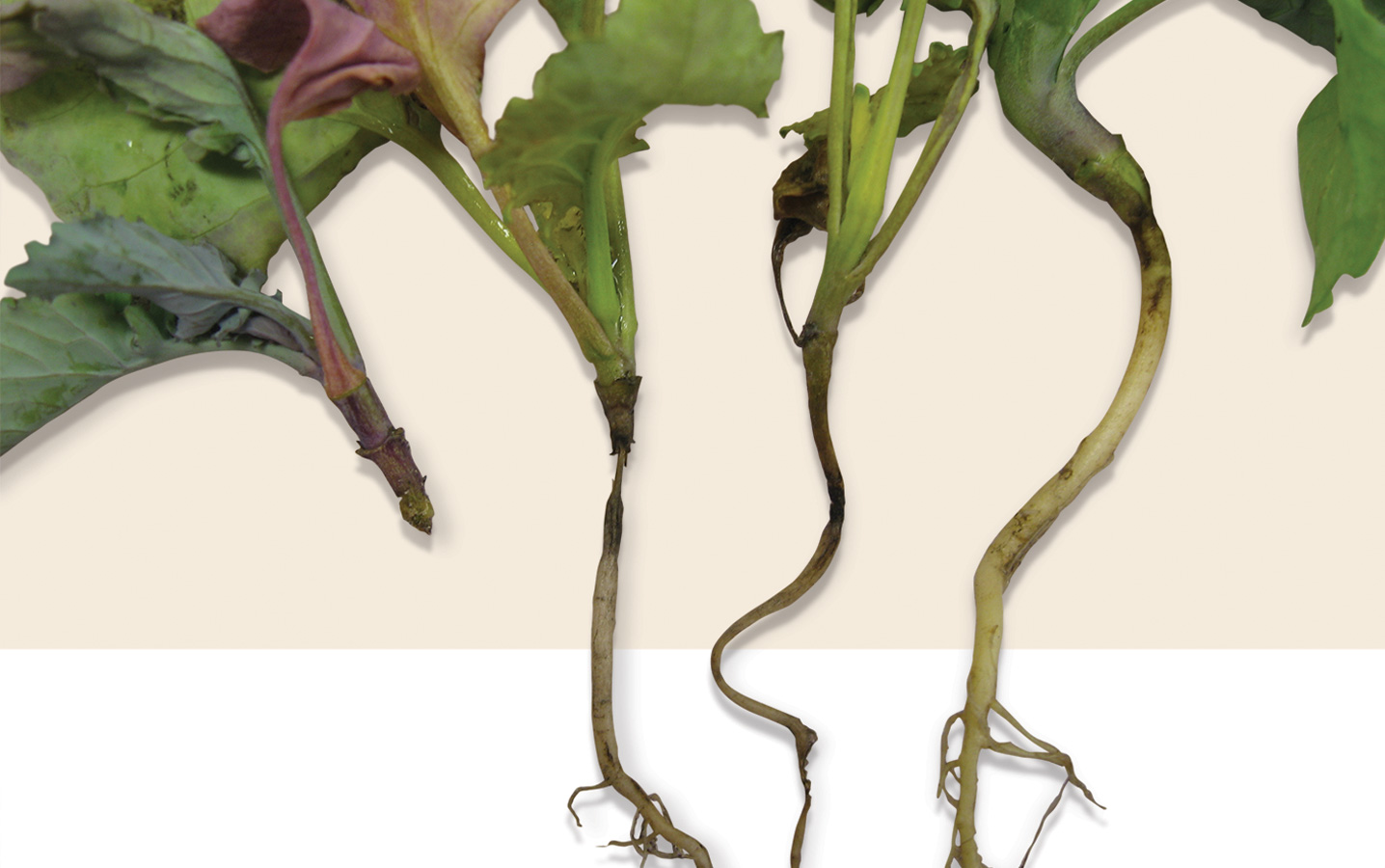Diverse crop rotations reduce soil-borne disease pressure
Key practice: Following a diverse rotation reduces soil pathogen populations and disease pressure. However, crop rotation should only be one part of your integrated approach to disease management.
Project title, Lead researcher: “Effect of crop rotation on canola seedling
blight and soil pathogen population dynamics,” 2006-07, Sheau-Fang Hwang,
Alberta Agriculture and Forestry
Grower organization funder: ACPC, SaskCanola
Long-term crop rotations have been used as a standard practice to reduce disease pressure in field crops. However, current market opportunities and cultivar advancements have resulted in a trend toward tighter rotations. This study determined that this shift in production practices increases soil pathogen populations, and may result in poor seedling establishment and losses to seedling blight and damping off of canola.
Led by Sheau-Fang Hwang of Alberta Agriculture and Forestry’s Crop Diversification Centre North, field experiments were established in Scott and Melfort, SK to determine the impact of long-term crop rotations on soil pathogen populations and on the growth parameters of canola.
Seven diverse crop rotations were studied, as follows: continuous canola; continuous field pea; canola-wheat; pea-wheat; pea-canola-wheat; canola-wheat-pea-wheat; and canola-wheat-flax-wheat. The canola rotations also had the additional factor of hybrid versus conventional cultivar.
A total of 21 soil samples were collected from these rotations and soil fungal populations were examined. The greatest number of isolated CFU (colony-forming units — a measure of pathogen abundance) represented Fusarium species, followed by Pythium and then Rhizoctonia, the primary pathogens in the disease complex affecting canola seedlings.
On average, soil pathogen popula-tions and the number of CFUs were approximately five percent lower in a diverse four-year cycle compared to shorter rotations or continuous cropping. Interestingly, the number of CFUs for all fungus types was also higher in soil planted to hybrid versus conventional canola varieties.
Fusarium levels showed a maximum reduction of 52 percent in the four-year rotations when compared to continuous field pea, and an average reduction of 21 percent over all treatments. Rhizoctonia was reduced by as much as 23 percent when compared to shorter rotations at Scott, SK in 2006. Average counts for Pythium varied much more widely between the test sites and treatments, and resulted in similar final numbers from both four-year and tighter rotations.
In the case of the continuous crops, isolated Fusarium numbers were consistently higher where pea was grown, compared to continuous canola. Greater numbers of Pythium were isolated from the continuous canola soils compared to those planted to peas.
In addition, greenhouse studies indicated greater seedling emergence and growth parameters resulting from diverse four-year rotations. Emergence increases were as high as 41 percent and root vigour as high as 61 percent when comparing a four-year rotation to continuous cropped pea. Increases in shoot weight were as high as 51 percent over those resulting from tighter rotations.
This study also found higher emergence and growth patterns in pasteurized soil and when seeds were treated with fungicide, demonstrating that these are additional measures toward reducing the effect of soil pathogens and could be considered as part of an integrated strategy for disease management.
Recommendations
- Diversity in crop rotation can reduce disease pressure caused by soil-borne pathogens.
- Economic disease management relies on an integrated approach including varietal resistance, other cultural practices and fungicides.





